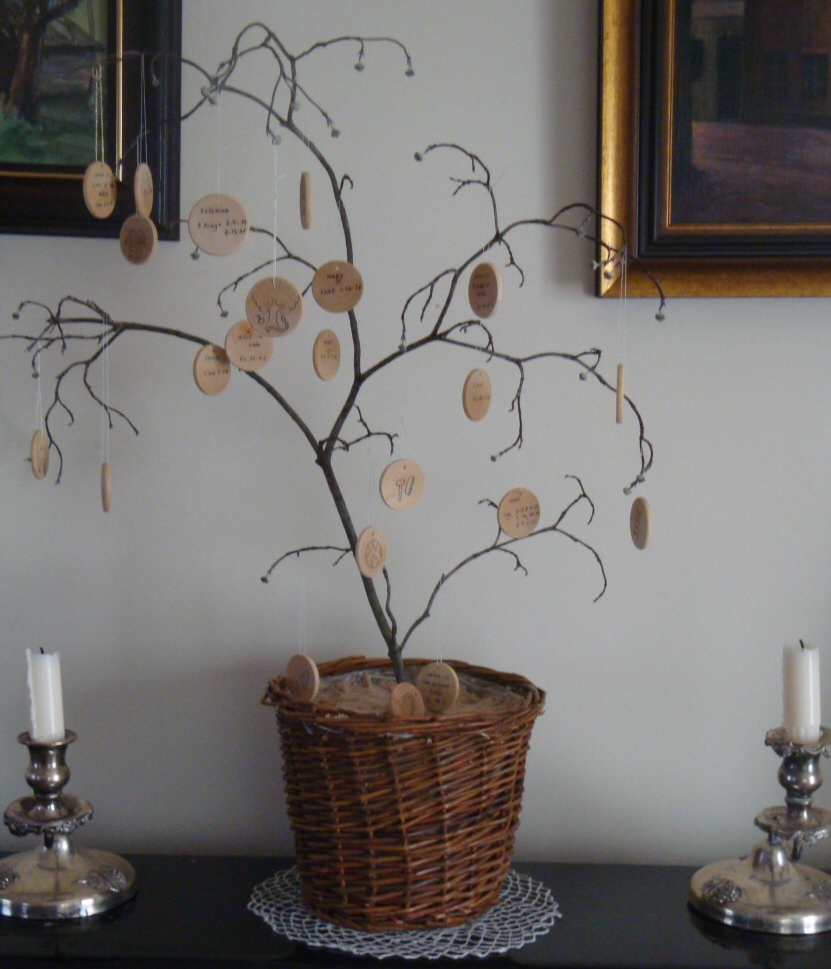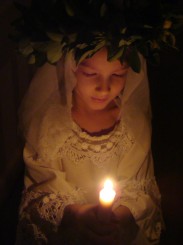I am still in awe of how abundantly my husband Tom and I have been blessed. Like country music star Garth Brooks states so well in one of his songs, “I thank God for unanswered prayers”. For years we prayed so hard to conceive a child. We could not even begin to have known how much more joy God’s plan for us would bring.
Early years of marriage: waiting for a child
Tom and I met during our freshmen year of college so we knew each other fairly well when we married a year after college. At the time of our marriage, we were aware that my medical history of severe endometriosis might make conception difficult. (Endometriosis is a common health problem in women in which the tissue that lines the uterus grows outside of the uterus and on other organs of the body.) We were lucky in that we had the opportunity to discuss this before marriage as well as the fact that adoption was an option that we were both comfortable exploring. But it didn’t make pregnancy announcements from friends and family any less difficult as we clung to the hope of conception for five years.
One of the most challenging part of those years of trying to conceive was attempting to navigate the world of fertility treatments and their moral implications. At that time we had only a vague sense that most fertility treatments were in opposition to the Church’s moral teachings. (We have only in recent years come to understand the richness and beauty of the Church’s wisdom on this. [1]) Nonetheless, we stayed true to Church teaching and began exploring adoption.
Beginning the adoption process
For at least a year, we attended multiple information sessions of state run adoption programs, private agency programs, and even met with an adoption consultant. Because we desired a newborn baby, we ruled out international programs and chose to pursue private domestic (within the US) adoption. Most children adopted from overseas are older than infancy.
I was in graduate school in Boston at the time and had a faculty member who had just adopted a baby. I set up a meeting with the same private agency that she used and we quickly compiled the vast ream of paperwork that the agency required. (By the end of this process, I think that the agency knew more about us than our own parents did!)
Our application was submitted in January 2000. We then began a series of home study meetings with the agency. Contrary to popular media’s portrayal of these meetings as involving a stern looking woman entering your home for a white-glove inspection, nothing could be further from the truth. The social workers that we met with were partially there to assess our motives and suitability to become adoptive parents. At the same time, their goal was also to try to help prepare us for the process, experiences, and possibly even challenges that adoption could bring to our lives.
Receiving the call
Although the matching process can vary by agency, these days, many private agencies give the birthparents the opportunity to select their baby’s adoptive parents. So we prepared a photo album that gave a sense of who we were and we wrote a letter to the birthparents to be included in the album. The agency then forwarded albums to the birthparents so they could choose an adoptive family for their child. I can only speculate, but I think that getting the call from an agency saying you’ve been selected by birthparents and the match has been made is somewhat synonymous to getting the much coveted call from the doctor’s office saying that your blood test was indeed positive for a pregnancy. From this point, the little girl whose birthmother had chosen us to adopt her child was, in our minds and hearts, fully our child. There is a saying that a biological child grows in the mother’s tummy but an adopted child grows in the parents’ hearts. Nothing could be more true.
In August 2000, our first child, Katie was born. Unlike many couples who are blessed with a more direct path to parenthood, we took nothing for granted with our blessing. We “fought” for our turn to change her diaper (weird, huh?), feed her, and hold her.
Adopting again
In May 2002, Tom had a new job and we were preparing to move to another part of the state. Katie and I were having breakfast with a friend who asked if we were planning to adopt again. It seemed like a crazy time to proceed since we were trying to sell one house and were in the middle of building a new one. Her questions seemed to light a fire in me though, and I became a woman on a mission. The details fell easily into place (despite the fact that we had to change adoption agencies) and by June 2002, we had submitted our second adoption application. Even though we had so much on our plates with a toddler, a move, and an impending adoption, I felt a profound peace from that day in May straight through to the day in January, 2003 when we were blessed with the birth of our second daughter, Meaghan. (I was even fortunate enough to be at the birth!) Meaghan was born in Georgia, which required a two week stay as we waited for the legalities of the adoption process to be finalized. Gratefully, we were blessed with mild Georgia weather while our home state was buried in snow and a record-breaking cold spell.
A boy and a girl!
In December 2004, we submitted our third application for adoption. The process was uneventful and much easier by the third time. Katie was four years old at this point and whenever we asked her if she thought this third child would be a boy or girl, she confidently replied “Both!” We would soon discover that she must have had a direct line to God. Our son, Andrew, was born in Ohio in September 2005. Once again, we remained in Ohio for a couple of weeks as we awaited the legal process.
The day after we returned home, I was sorting through a box of baby clothes (and putting away the pinks and purples), when I was moved with a profound longing for another little girl. Now, mind you, I was thrilled to have Andrew in our life. He was a sweet and easy little baby. So, I was befuddled why my heart felt this so keenly. One week later, I had my answer.
When Andrew was only three weeks old, the adoption agency that we worked with to adopt Katie called to inform us that Katie’s birthmother was pregnant again and wanted to know if we would be interested in adopting this child who was due in four months. I suddenly understood my strangely timed interior longing for another girl and chuckled as I reflected on Katie’s childlike prophesy of “a boy and a girl.” I knew, without a moment’s hesitation, scared as I was by the situation, that this was God’s plan for our family. Molly was born in January 2006, and once again I was blessed to be present at the birth.
Life as an adoptive family
Almost eight years after the birth of my fourth child, I rarely think about the fact that these are adopted children. I just know that they are “our children”. They know that they are adopted and it comes up periodically in conversations. They just started at a new school and were commenting on how people often don’t believe them when they say that they were adopted. Minimally, we reflect on it at that point each year around their birthdays when we send letters and photos to their birthparents (via the agency). Otherwise, at this point we have no direct contact with the birthparents. I have no doubt that at some point, some or maybe even all of our children will seek out a meeting with their birthparents. When that time comes, and they are of the appropriate age and maturity to do so, Tom and I will stand by them and support them in this process of self-understanding.
There are times when something like completing parental health history on their medical forms call to mind that they are adopted. There are also the occasional school projects about the students’ ethnicity that creep up. Otherwise, we chuckle on the many occasions when Tom or I have been told how much our children look just like us!
I would be misleading you if I told you that it was all easy. The adoption application process, at times, felt profoundly invasive. But if you talk with many new mothers, I think they might describe the birthing process as rather invasive. There are some challenges that are unique to adoptive mothers and fathers. It is difficult to explain to adopted children that just because they were “given up” for adoption, it does not mean that they were not “wanted”. (The term used more widely now is “placed for adoption,” which helps highlight the selfless generosity of birthparents in choosing an adoptive family for their child.) When we reflect on our children’s future weddings, we understand that there is a remote possibility that we might have to share the “parent pew” with their biological parents. Then we remember that these four little blessings were only given to us to “borrow” for a short period of time, but they don’t belong to us, or to their biological parents. They belong to God.
About the author
MaryPat and her husband Tom, shown above with their children, have been happily married for 20 years, regardless of the fact that they have very few common interests – except for God and family – proving that opposites really do attract! MaryPat worked in college admissions and as a high school guidance counselor until she became the full-time mother of four adopted and much beloved children. With all four children now enrolled in school, MaryPat has begun working with families as an Independent Educational Consultant through her new business, Compass College Advisors. Tom is employed in the banking industry and spends his time sharing his deep love of the Catholic faith with anyone willing to listen. They reside in the Archdiocese of Boston.
Notes
[1] See USCCB document about infertility and ethical reproductive treatments: “Life-Giving Love in an Age of Technology” (2009).




